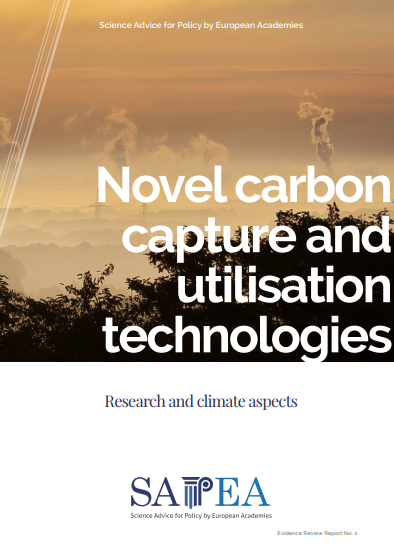Novel Carbon Capture and Utilisation Technology: Research and Climate Aspects
As the effects of climate change are becoming more visible, technologies for mitigating these effects are being sought. Do Carbon Capture and Utilisation (CCU) technologies have the potential to contribute significantly to such mitigation efforts? These technologies aim to extract CO2 either from concentrated sources such as the chimneys at coal- or natural gas-fired power stations, steel mills or cement factories or directly from the ambient air, and then use it as a raw material for carbon-containing products, such as fuels, chemical products, and building materials.
At the same time, carbon dioxide is a notoriously inert molecule and conversion processes can be highly energy intensive process and it is therefore crucial that this energy comes from carbon-free sources. This is the framework within which this report discusses CCU. Commissioner Miguel Arias Cañete (Climate Action & Energy) asked Carlos Moedas, Commissioner for Research, Science and Innovation to entrust the new Scientific Advice Mechanism and its scientific and engineering networks of European academies with the mandate of exploring the potential of CCU and provide a scientific opinion on the challenges and opportunities of novel carbon capture and utilisation technologies, thereby providing a direct link between scientific expertise and policy makers in the European Commission.
SAPEA set up an international Working Group of experts in the various domains concerned (energy systems, economy, chemistry, catalysis, electrolysis, etc.) that provided the necessary specialist knowledge about the concerned subjects.




